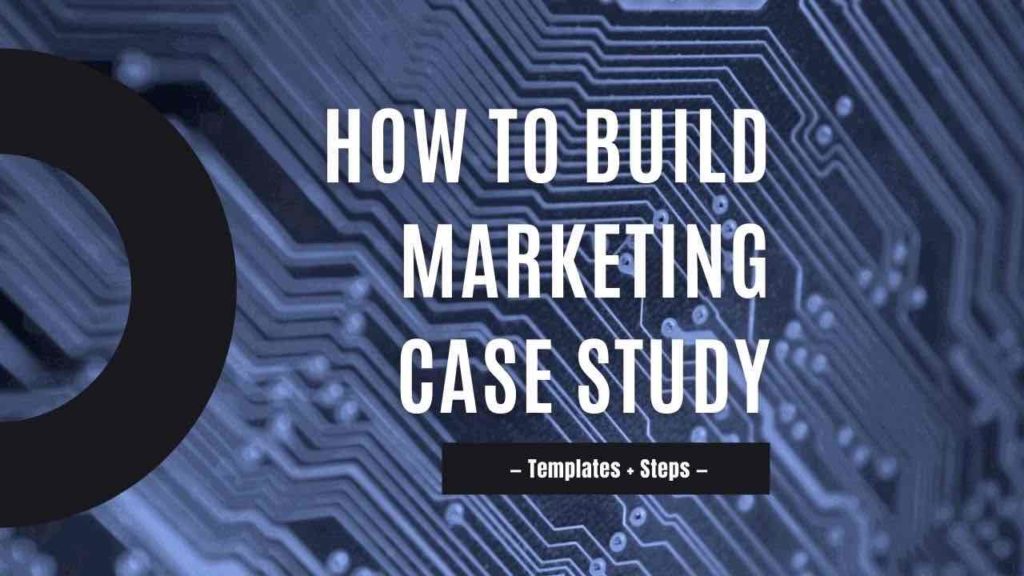One of the main reasons why it’s difficult to convert some leads to customers despite using innovative marketing strategies is lack of trust. Potential customers are aware that marketers make a lot of things up in a bid to convert customers. Therefore, no matter how persuasive a copy is, they are still skeptical about whether your product or service can perform what it claims to do. To bridge this trust gap, it is essential to create marketing case studies for your campaigns.
Marketing case studies allow you to creatively show off your results while persuading potential customers. This is done through storytelling and highlighting of how you helped a similar customer or client to solve a problem and achieve great results with the product or service you are promoting.
—
A marketing case study demonstrates your track record and it helps leads to decide on using your products or service over others in the market. If you can show, in practical details, how you helped a customer or client overcome a particular problem, you will build more trust with leads and convert them to customers.
This article considers what makes an effective marketing case study, and how you can create a compelling one for your next campaign. First, let’s consider the steps to follow to create one.
Steps for Creating a Marketing Case Study
A marketing case study is not just a testimonial from a satisfied customer, it is an analysis of a real situation or problem, and how your recommended solution (product or service), and specific actions taken helped to achieve uncommon results. The following are what you need to do to create a case study that will be unique to your campaign.
Step 1 – Ask Customers to Participate in a Case Study
Reach out to your existing customers who have had a positive experience with your solution and ask them to participate in your case study. But don’t assume that every one of them will be willing to participate. However, there are guidelines and templates on how you can easily get customers to participate in your case study that you can follow and get good responses.
Prepare and Send Questions ahead
After consent has been given, send out an email to schedule a phone call, Zoom, or physical meeting, and then outline the questions you plan on asking them so they can prepare ahead for an interview with you. Below are some sample questions:
How did you find out about our company?
This question is aimed at understanding the customer’s journey. This could be through organic search, paid search, social media, or referral.
What made you start looking for our solution?
This question is meant to unravel the main problem that made your solution necessary. You expect to get some details of the actual problem and how long they have been experiencing it.
Which other product did you try before using ours?
This is to know which solutions the customer actually tried before yours and why they think those solutions didn’t work.
Which other solution(s) did you consider before deciding on us?
This is to know why the customer chose your solution above the competition.
Tell us about your experience with our solution? What you’ve done with it and how it has been so far?
This is to get detailed information on how the customer used the solution and what the experience has been like.
How has our solution changed the narrative for your team?
This is to know how the solution has benefited the client’s team
.
What tangible results have you seen with our solutions so far?
You want them to give specific figures and results they have achieved with your solution.
What do you hope to do with our solution moving forward?
This is to know how the customer is planning to use your solution going forward in order to achieve their goals.
You can also ask additional questions that you think are relevant to your campaign and can get you more information to create the case study.
Step 2 – Interview the Customer
Once you agree on interview date and format with the customer, get their consent to record the conversation. In addition, request that the customer provide relevant images, videos and screenshots that can help validate their story. You need to lace your case study with as much visuals as possible that can entice potential customers. Once you’ve got all the information you need from the customer, transcribe the interview into text, and you are ready to create your story.
Step 3 – Obtain Additional Data
You need to support your story with relevant data, therefore apart from the interview, obtain additional information about the company. You can request for their reports to find numerical values to back up claims made during the interview. You can also use the data generated from client surveys to find relevant stats that you can use in your story.
Step 4 – Create your Story
Use key points from the interview to create an exciting narrative. Highlight sensory details, pain points, and important stats and figures, and quotes from the interview. When your story is ready, you can turn it into a video by using graphics and voice over to make it more engaging and compelling. Some potential customers might find it more attractive watching the video version than reading the text.
Step 5 – Elements of an Effective Marketing Case Study
The arrangement matters when writing the story for your case study. Below is a format you can follow:
Title: Use a meaningful and compelling title e.g Case Study: How Company A Hired 9 Employees Using Product B .
Subtitle: Provide a little more information on what the reader can expect from the case study. E.g “A time and budget-saving approach to attracting top talents through recruitment marketing “
Customer’s Company Overview: Find two or three sentences from their company’s overview. Highlight the parts that are relevant to your target audience.
Your Company overview: Bring out few sentences from your company overview, focusing on the product or service that your marketing case study is based on.
Introduction: Present your client’s company and their situation (problem).
Solution: Introduce your product and why the customer decided to choose you. This is based on their answers during the interview.
Action: Highlight how the client implemented your product or service and what difference it made for them.
Results: Highlight the result that shows that the company was successful with your product. You can also share how the results have now made the client to decide to stick to your solution going forward.
As you put your story together, use quotes and stats in strategic places to buttress your point and make the story believable. In addition use a good webpage layout as well as designs and colours to enhance your narrative. Also, consider the right use of H tags and image placement in your copy.
Conclusion
Marketing case studies are made for specific campaigns; therefore, if you are offering different products and services, you will need to create case studies for each of them. Another thing to note is that for a compelling case study, you may need to hear from more than one customer and choose from whoever has the best story that is relevant to your target customers.


